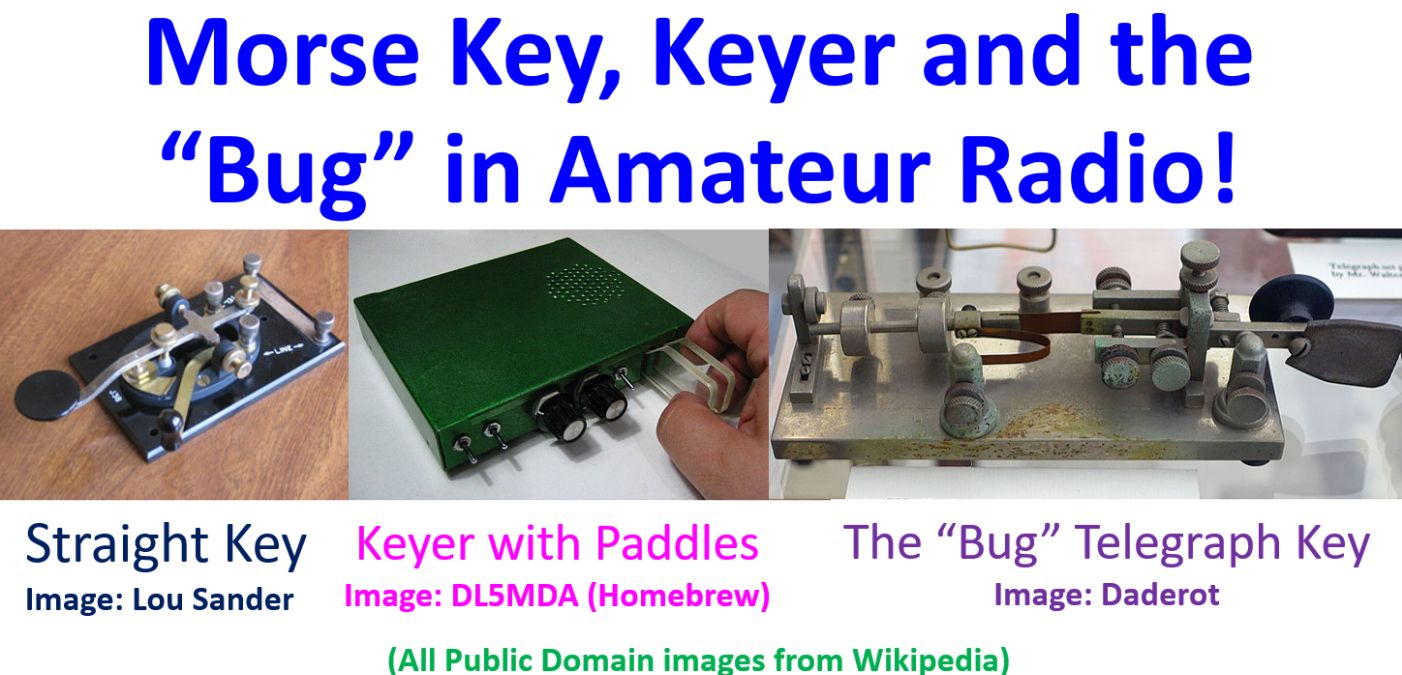Morse Key, Keyer and the “Bug” in Amateur Radio!
Morse Key, Keyer and the “Bug” in Amateur Radio!
We often hear about Straight Key, Keyer Paddles and the “Bug” during discussions among ardent Morse Code operators in amateur radio. Straight key is nothing but the time old telegraph key right from the days of Samuel Morse in 19th century. I have used it a lot during my early days of amateur radio to work both local and DX stations on CW. In radiotelegraphy used by radio amateurs, a short press will send out a dit (.) and a long press will send a dah (-). Typically the duration of the dah is three times that of the dit. It actually keys the carrier wave output of the radio transmitter in radiotelegraphy or wireless telegraphy. Morse code code can be practised without transmitting by using a code practise oscillator which generates an audio tone which can be keyed.

Then came the semi-automatic key, often called the ‘Bug’ and Martin’s Vibroplex key after the inventor and the company which manufactured it first in 1905. The one shown in the picture is a version invented by Weston Hadden in 1913. It has a clockwork mechanism which can produce uniformly timed dits, crucial for decoding the signal at the other end. When the paddle is pressed to the right with the thumb, it produces a series of dits. When it is pressed to the left, it makes continuous contact suitable for sending dah, the timing of which is by the operator. The side to side motion reduces the repetitive strain injury which used to cause ‘glass arm’ or ‘telegraphic paralysis’ in the days of straight key telegraphy.
Still later came the electronic keyer paddle which also works by swinging the lever side to side. When pressed to one side it produces a series of dahs while pressing to the opposite side produces a series of dits. But it ineeds an electronic circuit along with the paddle, either in the transmitter or separately. Single paddle and double paddle keyers were there. One illustrated in the picture from DL5MDA has a homebrew keyer with two paddles. Single lever keys were called sideswipers while the double paddle keys were called iambic keys or squeeze keys. In iambic paddles, one paddle produces dits and the other produces dahs. If both are pressed together, it produces alternating dit-dah-dit-dah. What occurs first depends on which side was pressed first. Iambs of poetry were a short sylabble followed by a long syllable and hence the name iambic paddle. Speed of keying can be adusted by turning a knob, without the need for too many adjustments as in case of the semi-automatic keys.